Thomas Jefferson referred to it as “the necessary.” The British call it the loo.
Most of us were taught not to talk about what we actually do while we are in it. Especially not at the dinner table. But using it is something none of us can avoid.
We're talking, of course, about the toilet.
It may surprise you that not every RV traveler uses theirs. In fact, two Airstream newbie couples recently told us that they only use campground bathrooms–not their Airstream toilet. They just aren’t sure about the whole thing, and they have yet to purchase a sewer hose.
We also receive interesting poo-related questions by email. One of these—“how do you lube the black tank valves?”—had us conjuring a variety of nightmare scenarios. Thankfully, the answer to this question is: you don’t need to lube the black tank valves.
Then, a few months back, we came across this online post:
“...Today at the service center we ran into a couple having warranty work done on their 1 year old Airstream. They told us that during the entire year they’ve owned it, they have never once used the toilet, and it still has plastic on it. And they camp every other weekend!”
So, we decided it was time to take the fear out of pooping in an Airstream or other brand RV toilet, and provide some practical guidance about toilet and sewer maintenance.
The good news is, nothing about these maintenance steps is rocket science. Here are the answers to the most common questions we're asked.
1. What’s ok / not ok to flush down the toilet?
This answer is simple: Only toilet paper and anything you’ve previously eaten or drunk.
That means none of these things are ok to flush, so do not put them in your toilet.
- Paper towels
- Pre-moistened wipes–even if the package says they are flushable, don’t
- Feminine hygiene products–this should be obvious but…
- Anything made of cloth–that means no rags or undies (you’d be surprised what Rich has witnessed being pulled out of clogged black tanks)
- Any product that contains petroleum distillates–Airstream’s Owner's Manual explains that products with this ingredient will attack the rubber seals of your toilet and dump valves
- Abrasive cleaners
- Bleach
2. Do I need to purchase that special RV toilet paper?
No. The need for special RV toilet paper is a myth and it’s more expensive than regular brands. We don’t use it, and we don’t recommend it.
Single-ply toilet paper (any brand) will not clog the system, as long as you don't use copious amounts, and you use enough water when you flush.
3. Ok, so how much water should I use when I flush?
It’s commendable that many Airstream and other brand RV owners try to conserve water when they travel, but the pooper is not the place to skimp.
If you don't use sufficient water when you flush, solid waste can build up and ultimately create a thick or semi-solid pyramid down there.
Trust us, you don’t want to build your own personal poop emoji in your potty. Getting rid of it is messy and could be expensive.
Here are our tips for a proper flush:
- Little potty–After you go, flush all liquid and toilet paper, and hold the foot pedal down for maybe another few seconds to wash the bowl.
- Big potty–Before you sit, fill the toilet bowl about ⅓ to ½ with water (hold the foot pedal down just a bit so water flows but the toilet doesn’t flush). After finishing your business, flush it all down and hold the foot pedal another few seconds for good measure.
4. Must we wear gloves when hooking up the sewer hose and dumping the tanks?
No, you don't have to. But many people choose to.
If you choose not to wear gloves (as we do), you must wash your hands thoroughly with soap and water after you are finished dumping.
If you choose to wear gloves to avoid touching the sewer hose or the residual liquid that sometimes drips out of the black tank outlet, use disposable vinyl or latex gloves and throw them away after one use.
Finally, always keep the sewer hose in a "dirty" compartment or bin away from other items like the fresh water hose. For example, we keep the sewer hose in the back bumper compartment of our Airstream Globetrotter.
5. What’s the best way to dump the tanks?
Whether you have hookups at the campsite or you are using the dump station, it’s as easy as 1, 2, 3:
- Pull open the black tank valve and keep it open until you can tell hear that all of the nastiness has shot through (this will be quite obvious)
- Close the black tank valve
- Pull open the gray tank valve and keep it open until you can hear that liquid in the gray tank. The gray tank water will flush out the black tank goo left in the hose.
6. What’s the deal with the sewer hose that has a clear plastic elbow at one end? Do we need one?
Again, the use of this equipment is a choice.
Some RVers, especially when they are new, appreciate the clear elbow because during a black tank flush they can see when yucky stuff has been emptied, and the water has become clear.
Just know that the plastic window is only to show you what's flowing out of the hose; it does not have a technical purpose and you can do without it as you become a more experienced dumper.
We do not have a clear plastic elbow on our sewer hose. (Yet ironically, the elbow itself is made of yellow plastic...)
7. Is there something I should do to maintain the toilet/sewer system?
Yes. Use RV toilet treatment chemicals each time you dump the tanks.
The enzymes reduce smell, minimize chunks in the black tank, and generally keep things flowing.
Here’s how to use them:
- Dump the gray and black tanks
- Turn on the pump and fill the toilet bowl with water
- Pour in the recommended amount of RV chemicals (read the label)
- Flush the toilet and all of the chemicals down
There are dozens of brands of RV toilet treatment chemicals. They are inexpensive and you can get them at Wal-Mart, Camping World, or other RV stores. We don’t have a recommended brand, but here is one we’ve used.
8. How often should we perform a “black tank flush?”
The “black tank flush” is a feature installed in all modern Airstreams and most other RV brands. Essentially, it’s a little shower head in the black tank that lets you rinse down the tank periodically. For example, in an Airstream, you hook up a freshwater hose to the fitting marked “Black Tank Flush” and turn the water on full. Check your Owner's Manual for details.
There is no specific, factory recommendation about the frequency of a black tank flush. The Airstream Owner's Manual only recommends that the tank flush be used "on a regular basis or the holes on the spray head may become closed.”
If you follow proper dumping procedures, use RV toilet treatment chemicals after each dump, and don’t put the wrong stuff down your toilet, you shouldn't need to perform a black tank flush because the tank won’t get gunked up or clogged.
Certainly you can perform the task for peace of mind or personal preference, but many RVers have traveled for years without needing it.
9. Should the black valve remain open when at a full hookup site?
No. It’s ok to open the gray valve and empty the gray tank if you need to during your stay, but not the black valve. The goal is to keep the contents of the black tank in the black tank, until the tank is nearly full. That ensures that everything comes out in one great whoosh of water.
10. How do I know when it’s time to dump the gray tank?
In an Airstream, the tank monitor (SeeLevel II in late model trailers) will show "100%" and/or water will stop going down into your sinks, toilet, and shower. It’s a real treat when the gray tank fills up when you are taking a shower. If you're not fond of that, you should dump it every 2-3 days of typical use.
11. Should I clean the gray and black tank with bleach?
No. Your tanks are simply storing the yucky stuff until you dump at the campsite or dumping station. Where do you think it goes after that? Into someone’s septic system, that’s where.
Bleach kills the natural bacteria that makes those septic systems work. So, be kind to other people’s septic systems—do not put bleach into your tanks. And do not use bleach to clean the shower or sinks, either.
So why is it ok to use bleach to sanitize the freshwater tank, then? Because such a minute amount is used in the disinfection process. The dilution calculation is in this blog we recently posted on how to sanitize the freshwater tanks.
12. I’ve read that ice cubes can clean the black tank. Is that true?
No. This is an urban myth. The only benefit is that once melted, the water will keep things properly sloshy.
13. Does the toilet need to be winterized?
Definitely yes, as part of a complete winterization procedure. If you don’t winterize, you’ll run an issue like one of our campsite neighbors had last year: They bought a brand new Airstream then ended up unexpectedly having to store it for six months over the winter before ever traveling in it. They weren’t told about how to winterize it, so they didn’t. During the winter, the water line to the toilet cracked.
On the Airstream’s maiden voyage out of storage, they discovered the leak the hard way. They connected their trailer to water in the campground and left for the day, only to come back to a flood inside.
If you're looking for winterizing steps, download this free resource: The simple guide to winterizing an Airstream.
You’ll also find the winterizing procedure in your Owner’s Manual, by Googling it, or in Rich’s book, The (Nearly) Complete Guide to Airstream Maintenance, 2nd edition.


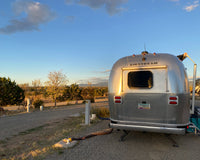
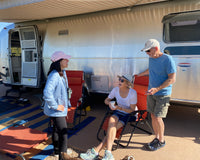
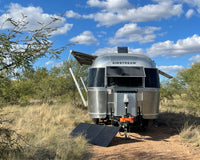
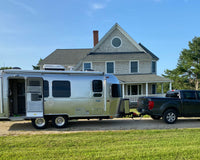
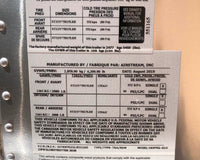
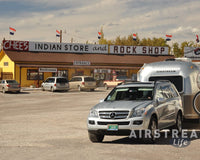

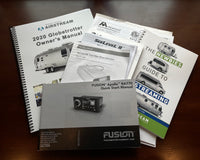
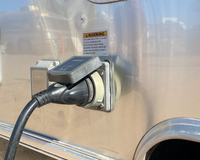
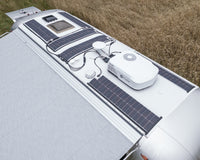
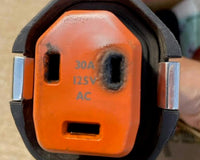



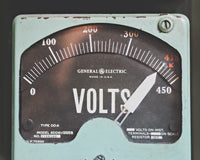


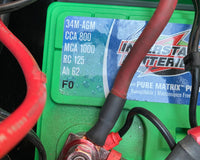
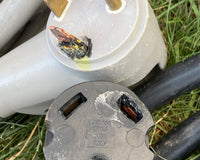
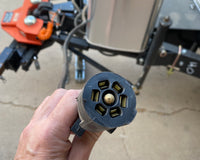
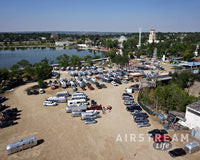
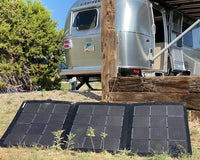
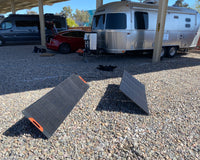
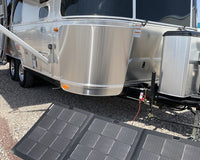

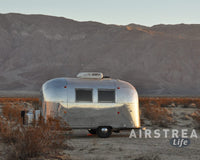
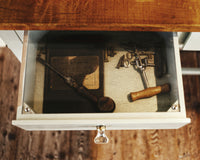
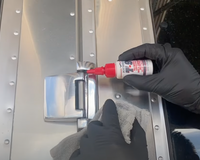
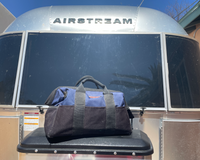

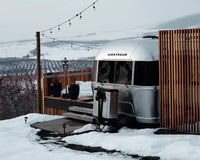

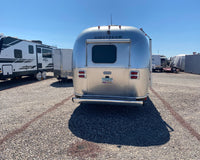
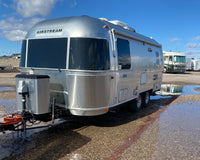
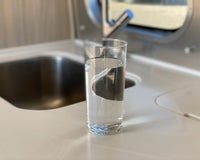
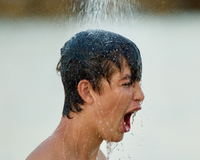
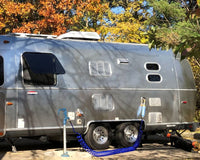
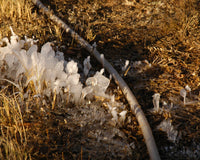
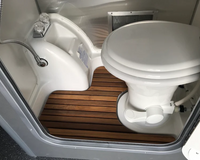
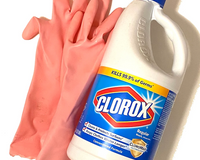
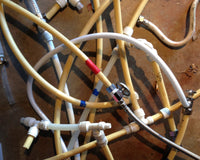
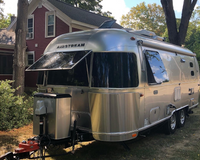
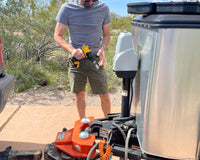
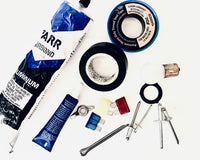
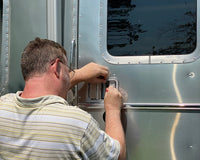
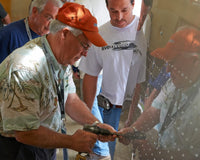
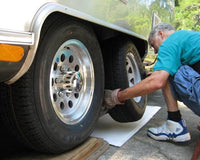
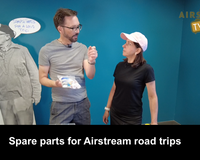
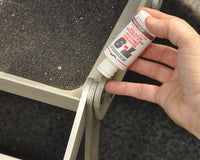

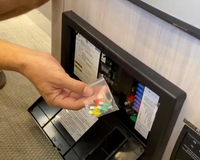
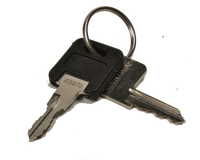
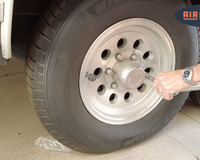
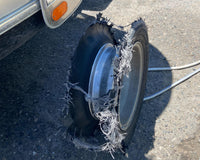
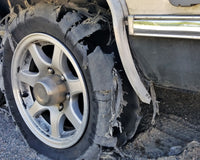
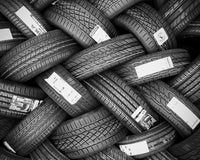

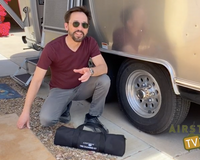

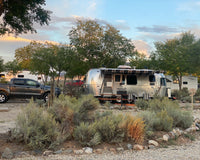
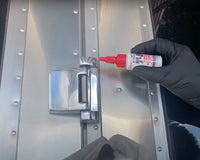
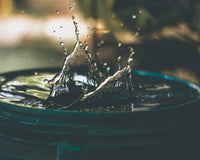

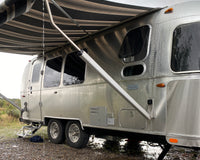
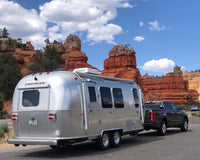
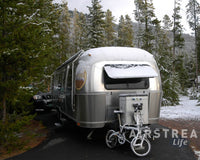
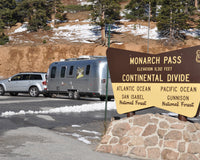
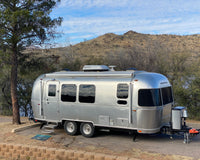
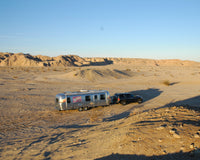
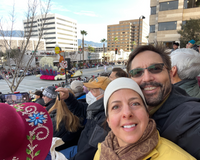

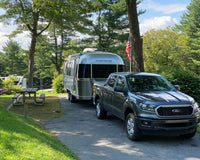
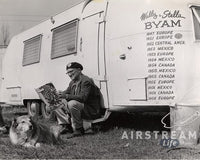
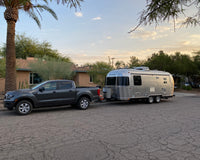
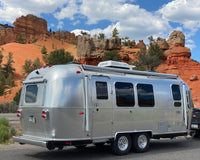
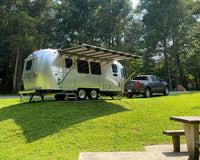
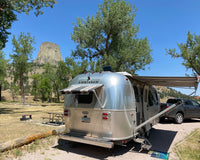
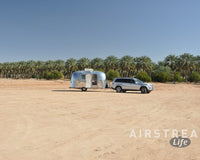


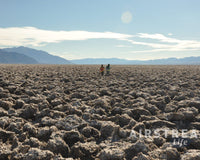
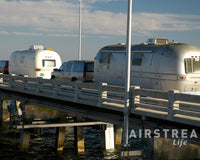
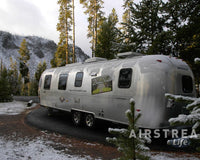
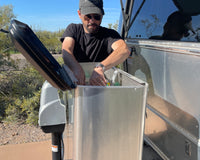
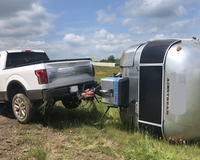
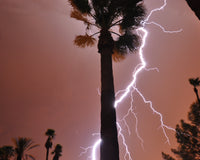

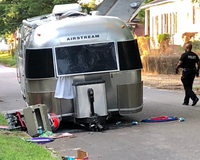
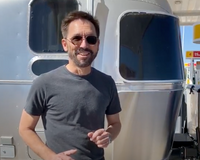
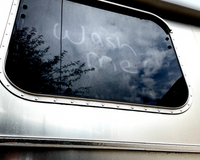
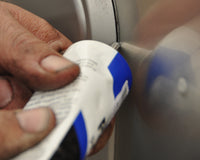
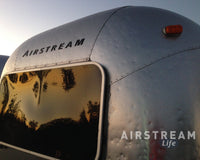

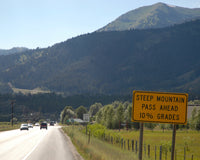
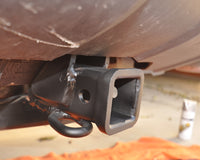
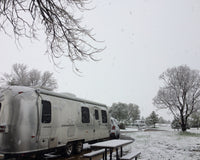
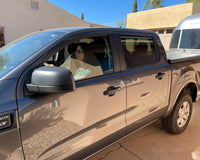
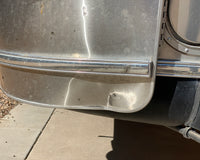
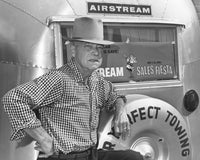
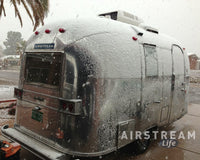
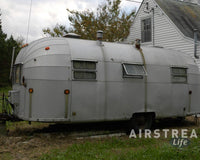
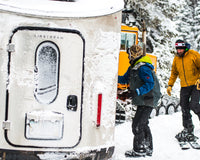
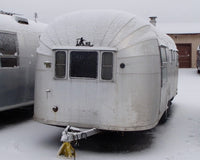
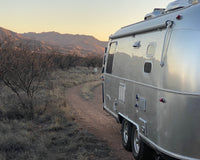
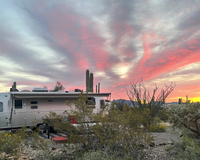
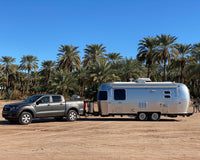
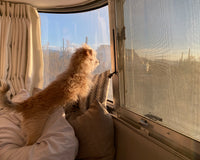
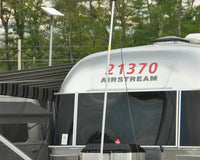
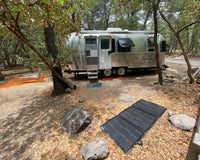
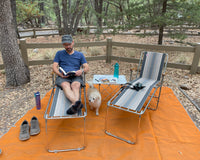



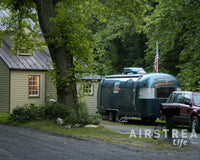
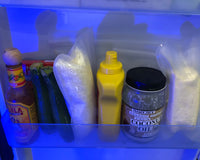
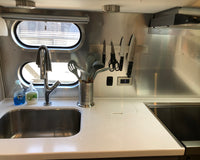
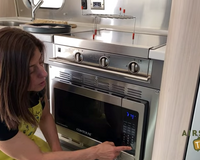
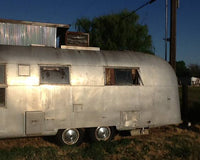

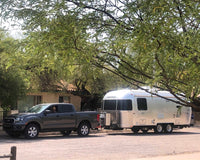
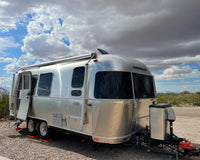
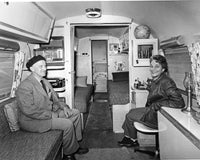
17 comments
Steve McClellan
We were told the ice cube trick by an Airstream Dealer, that is to put ice cubes down the toilet on travel day to help break up any remaining contents in the black tank. Also recommended adding a “cheap” can of beer. It did seem to work, especially when the black tank still read say 25-30% after dumping.
Another tip I was told from a fellow Airstreamer, was to bring the black tank flush hose into the airstream and spray down into the toilet to do a more thorough cleaning. I haven’t tried this yet, and am curious what you all think about this additional step.
Lastly, doing a thorough cleaning of the sewer hoses has always been a bit tricky with a garden hose sprayer, until I found the Rhino Sewer Hose Rinse Kit. Helpful tool.
Kerry Frank
This post had me laughing, thanks for the chuckle!
Rich Luhr
Steve, it’s not surprising that someone at the Airstream dealership mentioned the old ice cube story—that myth has been going around a long time. (Although I have to say the “can of beer” twist is a new one!)
Ice actually inhibits the process you want. The best practice is to use a tank chemical that encourages the waste to liquify, in plenty of water. You can read more about this in The Newbies Guide To Airstreaming, 4th Edition, pages 43-44.
If you maintain the black tank properly (use plenty of water, dump after every trip, use appropriate tank chemical every time) build-up won’t occur and you won’t need to make any special efforts.
Thanks for sharing the tip on the Rhino Sewer Hose Rinse Kit— and happy dumping! ;-)
Jill
Just curious. What is the rationale for keeping the black tank valve closed when at a full hookup site?
Rich Luhr
Jill, if you leave the black tank valve open, the water will drain out and the solids will settle on the bottom of the tank. Eventually they’ll form a buildup inside the tank that will be very difficult to remove.
You want the tank to have a good ratio of water and tank chemical at all times so that solids partially liquify and WHOOSH out when you pull the dump valve.
So always let the black tank fill up at least halfway before you dump. If you can’t do that, add water to the tank by filling the toilet bowl and flushing a few times, before you dump the tank.
Jeffery Hammonds
I don’t wear gloves when setting up or breaking down the black tank and accessories. I changed and cleaned enough diapers (the old fashioned cloth diapers) that the black tank duties seems tame. I do, as I did then, wash my hands afterwards.
William E Yanke
What do you recommend to fix “sticky” gray water and black water valves. There are commercial products that you are supposed to dump into the respective tanks. I have not been impressed that they work very well.
Thanks for all the help.
Jay B
@Steve McClellen Yes, I bring a Zero-G hose into the rig to more quickly fill the grey (from the sink) and black tanks for a final big flush… Usually do that twice… I’ve also pointed the hose straight down the “poop chute” and the pressure helps eliminate/prevent any (if) buildup. Not sure it’s necessary or if it does anything but I do that at least once per year (usually at the end of the season or if we’re not using it for a while) for “clean slate” peace of mind… Happy Trails!
Gil Jarvie
Another great post on a subject that is not always comfortable to discuss but, Cheryl, you managed to do it with panache and great information.
William Cruze
Hi Rich,
I have always benefited by your products and articles. My wife and I have a 2019 classic 33 and we have been full time for years now. I have come to realize that classics are, in some cases, unique. For example: the masorator toilet pretty much liquefies everything that goes down it. The good news bad news is, it’s easy to dump and the chemicals work faster. Bad news is you get a fine build up over time and it’s hard to get out if you don’t rinse often.
It looks like my wife may be going to work at Banner MD Anderson soon so we may be moving to Tucson. I would love to come and meet you and introduce myself if that happens. We can talk about poop. Thanks, have a blessed day.
Marion Kuhns
We recently had our tanks cleaned by Kleen Tank. They recommended a home mixed solution of Pine-sol and Calgon. Is this a good cleansing mixture?
Jennifer Sadugor
The Geo Method recommends Dawn and Borax for black tank cleaning. After initial cleaning, just use dawn…Since we use dish soap to wash dishes in the sink, why would it do harm in the black tank? Should we use something else to wash dishes with? I will check out your recommendation for black tank cleaner. Thank you for all the tips.
Katherine Romero
Curious about whether it is proper to keep a gallon or two of water and treatment chemicals in the black tank when you are not using it for a month or two? Or should the black tank always be empty after completing the last black water dump and rinse after being used on a trip?
Rich Luhr
ANSWERS:
William Yanke: We don’t have any specific recommendations for a valve lubricant. Various tank treatments are on the market for this purpose; we haven’t tested them.Anne Parker, Marion Kuhns and Jennifer Sadugor: A clarification is needed regarding the use of dish soap in the black tank. Cheryl was correct in her earlier comment that the Airstream Owner’s Manual says this:
“The only cleaning agents that can be used without causing harm to the [drain] system are household ammonia and tri-sodium phosphate in small quantities. Do not use any product that contains any portion of petroleum distillates … Also, do not use any dish detergent or abrasive cleaners. All products should be marked as approved for ABS drainage systems.”
However, that was specifically about cleaning the drains, not normal use of the black tank. Dawn dishwashing liquid (and water softeners like Calgon) help keep the tanks clean, because they help keep things from sticking to the walls of the gray tank. These products are safe to use, will not harm the tanks, and will not kill the beneficial bacteria.
I’ve modified this blog to prevent future confusion.
Rich Luhr
Katherine Romero: Yes, keeping a couple of gallons of water and tank chemical in the tanks during summer storage is an excellent idea. This will give the chemicals time to break down any remaining debris in the tank, keep the valves from drying out, and prevent nasty odors.
When winterized, of course, you should not leave water in the tanks. A little RV Anti-Freeze in the toilet is recommended, to keep the toilet seal from drying out, and it won’t hurt to have some in the black/gray tanks to compensate for any water that might be left over.
Paul
We have always kept a gallon or two of water in the black tank during travel to produce some mechanical sloshing action to help break down anything that might remain in there free dumping.
Rich VanOrsdale
We have been Airstream clampers since the summer of 2017. We always leave open the gray tank valve until the last morning, when we close it so we can get the gray water “whoosh” after draining the black tank. (The soap in the gray water helps keep the “poo-pipe” from getting too pungent!). We drain the black when it gets to 80-85% full, and after the drain, we close the valve, put in TWO “poo pellets” and run the flush for about 20 seconds. So far, knock wood, we haven’t had any poo-system problems. 😉